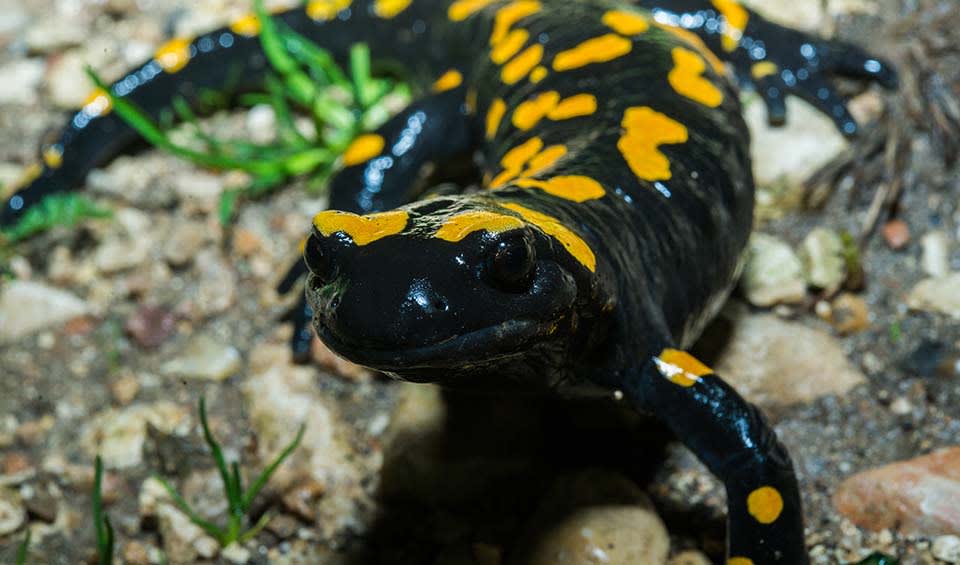Salamandra – Fire salamanders
Amphibians native to the deciduous forests of central Europe, western Asia and Northern Africa
These gorgeous, deadly amphibians are found in moist and forested parts of central Europe. They got their name from their striking coloration, which consists of bright yellow or orange markings set against a deep black background. This striking color pattern adds to their visual appeal and serves as a warning signal to potential predators, indicating their toxic nature.
Fire salamanders are typically characterized by their smooth, moist skin, which aids in respiration and water absorption. They have elongated bodies and well-developed limbs, allowing them to navigate both aquatic and terrestrial environments. Their coloration can vary greatly, ranging from vibrant hues to cryptic patterns that help them blend into their surroundings.
The fire salamander’s timid and solitary nature is well-known. During the daytime, it prefers to conceal itself in cool, damp hideaways, such as decaying logs, beneath stones, or within underground burrows. These secretive habits are a crucial survival strategy, allowing them to evade predators and maintain safety in their natural habitats.
One notable historical aspect of fire salamanders is their presence in the Netherlands, where they were once a significant population. However, their population faced a severe threat when a virus outbreak nearly wiped them out, highlighting the vulnerability of these amphibians to diseases and pathogens.
Species in this genus
Near Eastern fire salamander
Visually striking, these show-stoppers have bright yellow fire-like spots on their body
Alpine salamander
Swift, enjoys harsh weather, adores the mountains, and is toxic to its predators



